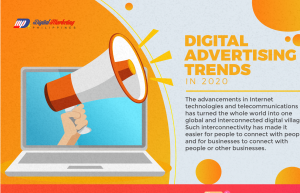So here you are in the year 2015….not far off 2016! You’ve been in business twenty-something odd years and have a respectable customer base. Recently, you decided it’s time to expand on that base so you “hired” a tech-savvy relative to create a website for your business (£150 seemed a good wage for a 19 year old. How hard could it be?).
High time, too! Nearly every business these days has a website, and they’re better off for it. Why not you?
Your business’ sleek, modern website has been online for over 6 months now. And what do you have to show for it? Nothing. Zilch. Diddly squat. Seven new, repeat customers have been added to your books, and not a single one found your business because of the website.
What went wrong? Were potential customers turned off by the colour scheme? Was it too wordy or not wordy enough? Did people even see it?! Shouldn’t Google, you know, know to display your website when someone looks for your type of business?
The truth is no. No, Google or any search engine most likely won’t display your business in the results unless it’s been specifically optimised for it. The overall look of your website may be on point, but search engines tend to pay more attention to other qualities.
This is where SEO (Search Engine Optimisation) comes in. Why do you need SEO? SEO is part of a digital marketing strategy which helps websites get higher rankings when someone searches for their business type, service offering and location by using a variety of techniques.

Local SEO: Research
Before you begin overhauling your business’ SEO, you’re gonna have to do some dirty work.
Oh no. What am I getting myself into?
You only need to do some digging around on Google. Plus you get to do some spying on your competition!
So let’s say you’re a baker by day with a quaint little business in Bristol. With the city being so large, there are nearly a dozen other bakeries listed in the SERPs (Search Engine Result Pages) when you Google “bristol bakery”.

To start making your way to the top of the SERPs, research the best keywords and phrases with the Google Keyword Planner. You’re looking for the ones with high search volume and phrases which express intent such as wedding cake bakery in Bristol, how to make fondant, and cost of birthday cake – you get the idea. Don’t be afraid to use some of the phrases with smaller search volume (a.k.a long-tail keywords) if you feel they apply to your business because sometimes those get the most conversions.
Now whip out your spy gear – a computer, your beautiful mind, and Majestic – and comb through your competitors websites. Find any guest posts, editorial mentions, and geo-targeted links (directories, sponsors, and resources). Then run these findings through Majestic to ascertain their Trust Flow. Pay close attention to bakeries with a rate of 10 or higher; they’re your biggest competition. Finish the analysis by checking their digital marketing strategy. If they don’t have a blog, quality content, or social media accounts, you can surpass them on the SERPs by utilising these things yourself (more on this later).
Local SEO: On-Site
Audit and Meta
Before updating your website’s SEO, you should conduct an audit to check for duplicate content, broken links, meta data, and keyword focus. There are many tools out there to help you do this, SEO Profiler, Screaming Frog but to name just two.
If you haven’t written the meta data, now is a great time to do so. Writing it yourself will guarantee Google recognises your site for the right keywords (this may not take you to the top of the SERPs, but it will move you up the ranks). Include unique meta data for each page. Make sure the Page Title contains the primary keyword and your location. Your keywords don’t have to be in the meta description, it’s not a ranking factor, however it can help with your click through rate (CTR).
Other areas to embed location specific keywords are the website’s URL, heading tags, and image alt tags. On your landing or contact page, embed a Google map of your address so customers can use it for GPS navigation.
Content
The foundation of any successful business website is quality content. The writing on your home or landing page doesn’t have to be fluffy, per say, but it should be engaging and informative. Don’t be afraid to inject humour and personality into your website. No one wants to read the same boring description every other bakery has on their “About” page. Being more relatable rather than a stuffy professional is more appealing, that is, if you want to portray your business as relatable.
However you want to brand yourself, be sure to integrate key phrases throughout the text. Don’t over do it though. Think about your topic and don’t solely focus one phrase. Research possible synonyms for your keywords, search engine algorithms are able to pick up on these and it will help your writing to be more readable and less “keyword spammy”.

Other forms of quality content include podcasts, videos, images, and blogs. Rich media is great for encouraging visitor interaction, this in turn helps reduce your bounce rate and increase time on site. All factors Google uses to see how useful visitors find your website and content. You’ll move up in the ranks and outshine the other bakeries that don’t attempt to entertain and engage their customers.
Try posting a weekly blog with tips and how to’s to educate your readers. And to reach those who are visual learners, upload Youtube videos showing them how it’s done. You may think showing potential customers how to make frosting by themselves will detract from your business, but proving yourself helpful gains trust and makes customers more willing to seek you for projects they can’t do on their own.
NAP (Name, Address, Phone Number) data
If your contact page and footer don’t already provide this information, include your business’ physical address, local phone number, and operating/contact times (commonly referred to as NAP information) in these areas. Placing this information in the footer is important because it’ll show on every page of your site, not just the contact page. Thus, making it more noticeable to Google.
Links
Another vital concept of SEO is proper use of internal, inbound, and outbound links. Including outbound links in your web page and blog content leads customers back to other informative sites which can boost your credibility. Only forge links with reputable websites with frequently updated and authoritative content, your link structure puts you in a neighbourhood of other sites and as in the real world neighbourhoods can be good and bad.
As a baker, you could include links to celebrity baker blogs, local wedding planners, and other local event coordinators. Likewise, prospect these local niche businesses to include backlinks (links which go back to your site) on their websites. You can also do this with local sponsors and directories.
Internal links lead customers to other relevant areas of your website. For instance, someone found your blog post on making tiered cakes. Relevant keyword anchor text led them back to your services or contact page, and now you have a potential new customer. Instead of relying solely on the home page menu to direct viewers around, utilise internal links in the content of each page to point them to prime areas.
User-friendliness

Slow load times are the worst. Really, waiting for anything for a prolonged period of time is nye on unbearable for most people (think waiting in the store checkout lane with the customer at the register counting out exact change in pennies). With the world’s attention span getting shorter by the year, few people will spend more than a few seconds waiting for a website to load. Even more infuriating is finally loading a website only to find it “glitches”. Images only load partially, or they don’t display at all. The bodies of text are constantly moving up and down the screen, making the viewer lose their place while reading.
You may have a mild temperament for these things, but most of your website viewers won’t. They’ll “X” out of the page without a second thought, and take their business elsewhere.
Websites which aren’t mobile-friendly are a nuisance as well. Smartphones and tablets make quick work of Google searches while on the go. And since the average person has a phone welded to their hand, there’s no need to use a computer for a simple search to find a local retailer. By ensuring your website is user and mobile friendly, viewers can quickly turn into new customers.
Local SEO: Off-site

Reviews
One of the more time consuming local SEO strategies is obtaining local business reviews. Receiving high quality reviews from local customers could take several months, perhaps years. It requires you to engage more with your customers and to take initiative in lieu of passively waiting for reviews to appear.
Start off by asking your existing local customer base to post reviews online through Google, Yelp, and other business review sites. You could do this by sending out emails with links to the appropriate review sites, have signs placed throughout the store with details and instructions, or simply ask customers to review after each transaction.
Encourage new customers to review your business by setting up a review page on your website. You could have them leave reviews or testimonials on the page itself or provide instructions on where else to leave reviews.
Social Media

It’s nearly impossible to escape social media nowadays unless you live on a deserted island (even there, you’d probably still receive annoying Facebook game requests). So it makes sense to utilise social media as part of your marketing strategy. You may be the type of person who despises or doesn’t understand this new form of technology, but the majority of your customers (and potential customers) probably use it on an hourly basis.
If you can’t beat ‘em, join ‘em.
Making an account for your business on Facebook will probably be the best place to start. After you’re comfortable using it, create accounts on Twitter, Google +, Instagram, LinkedIn, and Youtube. Basically, have an account with any social media platform which is relative to and will maximise your business’ presence. Post on these accounts regularly and include links back to your website. (Social media is another great place for customers to leave reviews).
Almighty Google

It’s no surprise that Google is a leading technology god giant and a boon for business owners the world over. Their armada of software certainly makes running a business easier (think Google Analytics, Adwords, Google Drive, etc). Among these many services, Google offers businesses the opportunity to create a Google + My Business page.
When setting up the page, don’t just provide the bare bone essentials (like some people do on their online dating profiles. It’s the worst). You want the page to be as detailed as possible. Like online dating, the more descriptive, engaging profiles receive more attention.
Come to think of it, a Google + My Business page IS an online dating profile but better because it brings great customers to your door rather than horrible first dates (unless you’re one of the lucky few with a superb dating/love life).
Besides a long, unique description of your business, you’ll need to properly categorise it as well as upload high quality, high resolution photos. Include reviews and your contact information (address, phone number, operating hours) so Google will enhance your local SEO.
User Signals
User signals refers to certain measurements which can determine your ranking within the SERPs. Use software such as Google Analytics to check your site’s CTR (click-through-rate), bounce rate (whether someone views your site then immediately leaves it), time spent on it, and which pages were viewed on each visit. Performing poorly in these areas can set you further back in the rankings.
Benefits of Local SEO

Now, you may be wondering Why do I need to bother with this SEO stuff? Why can’t I do it the old fashioned way and send out ads in the mail?
Applying local SEO to your website is probably as tantalising as having your mother-in-law over for two weeks during the holidays, but it does pay off (literally and figuratively). The results won’t be immediate, but over time you may see an increase in profits and new customers.
Aside from increasing your bottom line, SEO benefits your business by reaching a targeted audience. In this case, your target audience will be customers or clients looking for business in your local area (i.e. wedding cake bakery in Bristol). Optimising your site for local searches (high volume and phrases with intent) helps weed out the bigger companies and corporations, bringing people to your door instead.
Plus it helps establish credibility to your business and build your brand. And, depending on your traditional marketing budget, it may be less expensive. It’s OK if you’d prefer to keep with your traditional marketing methods though. SEO and other forms of digital marketing play nicely with them, and it will double your efforts.
Bet that grabbed your attention. You’re thinking Okay I totally want to do this! But I don’t know how or where to begin. SEO seems too complex for my niece. She did great with the website, but this might blow her teenage mind. So who do I hire?
The answer to those questions would be to hire a company which specialises in digital marketing and search engine optimisation. However, don’t hire just any old company solely because they are the least expensive. You want a company using current SEO techniques and one that updates their approach when new techniques develop. Investing more money on their services will pay for itself in the long run.
Good luck!
Digital & Social Articles on Business 2 Community(127)
Report Post







